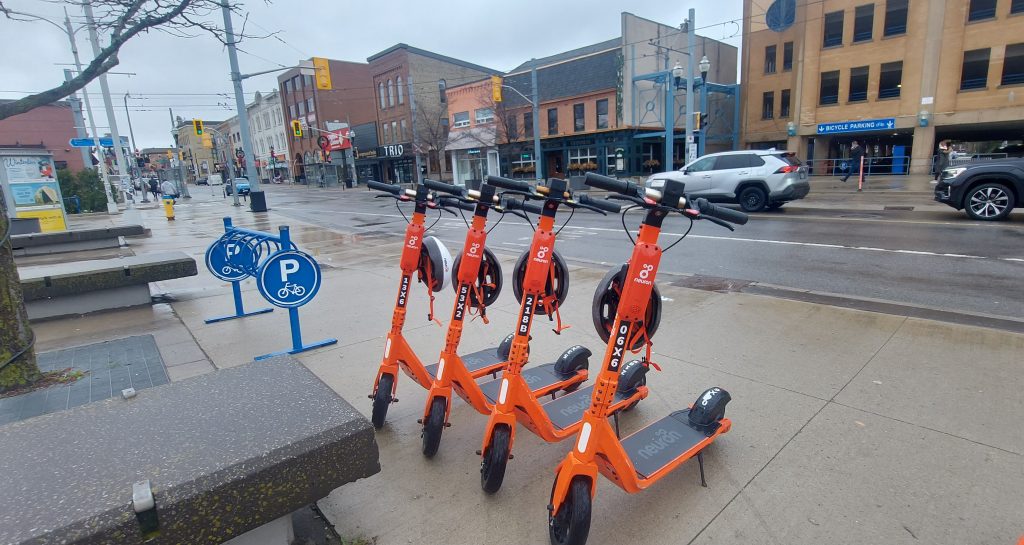Scooter success story: Demand for Neuron e-scooters growing

It’s being called a scooter success story.
Neuron Mobility Canada is the company behind those orange e-scooters, that you’ve likely seen rolling along roads in the tri-cities.
They launched locally last spring and since then, they’ve logged over 550,000 km of travel time; including more than 153,000 km so far this year.
Advertisement
On average, people are spending about $46 per trip, and Neuron spokesperson Isaac Ransom said that’s injected over $8.2-million dollars into the economy.
“When you break it down even further, we know that e-scooter trips — 31 per cent are making a purchase — so they’re shopping during their trip,” he said. “21 per cent are visiting restaurants, cafes, or bars and another 21 per cent are taking part in a recreational activity like going to the gym or a local event.”
He added that people hop on scooters for different reasons and at different lengths of time.
“Every rider is using a shared e-scooter or a shared e-bike for a different set of purposes. In general, what we’re seeing is that most trips are being logged in around 2 km,” said Ransom. “But we do have other riders that are a little more enthusiastic. Our longest trip so far has been 9 km.”
The Neuron e-scooters seem to be a big hit with younger crowds like university students, as more than half of local riders are between 16 and 24 years old.
While they’re a great way for people to explore the community and get some fresh air, Ransom said there are also environmental benefits since the scooters are battery-powered.
“In Waterloo, 20 tonnes of CO2 emissions have been eliminated since the start of the program, which is really encouraging. 32 per cent of trips are replacing a car journey; whether that be a taxi, personal vehicle, or Uber. These trips are taking cars off the road.”
Ransom said the scooters’ availability is seasonal and weather-dependent, but riders can expect to be able to use them well into October this year.
As for what the future entails, “We continue to work closely with our municipal partners on looking at next steps if there is areas where the service may go in the future,” he explained. “Right now, we’re really focused on optimizing the current riding area and making sure that riders are well served and able to access the service.”